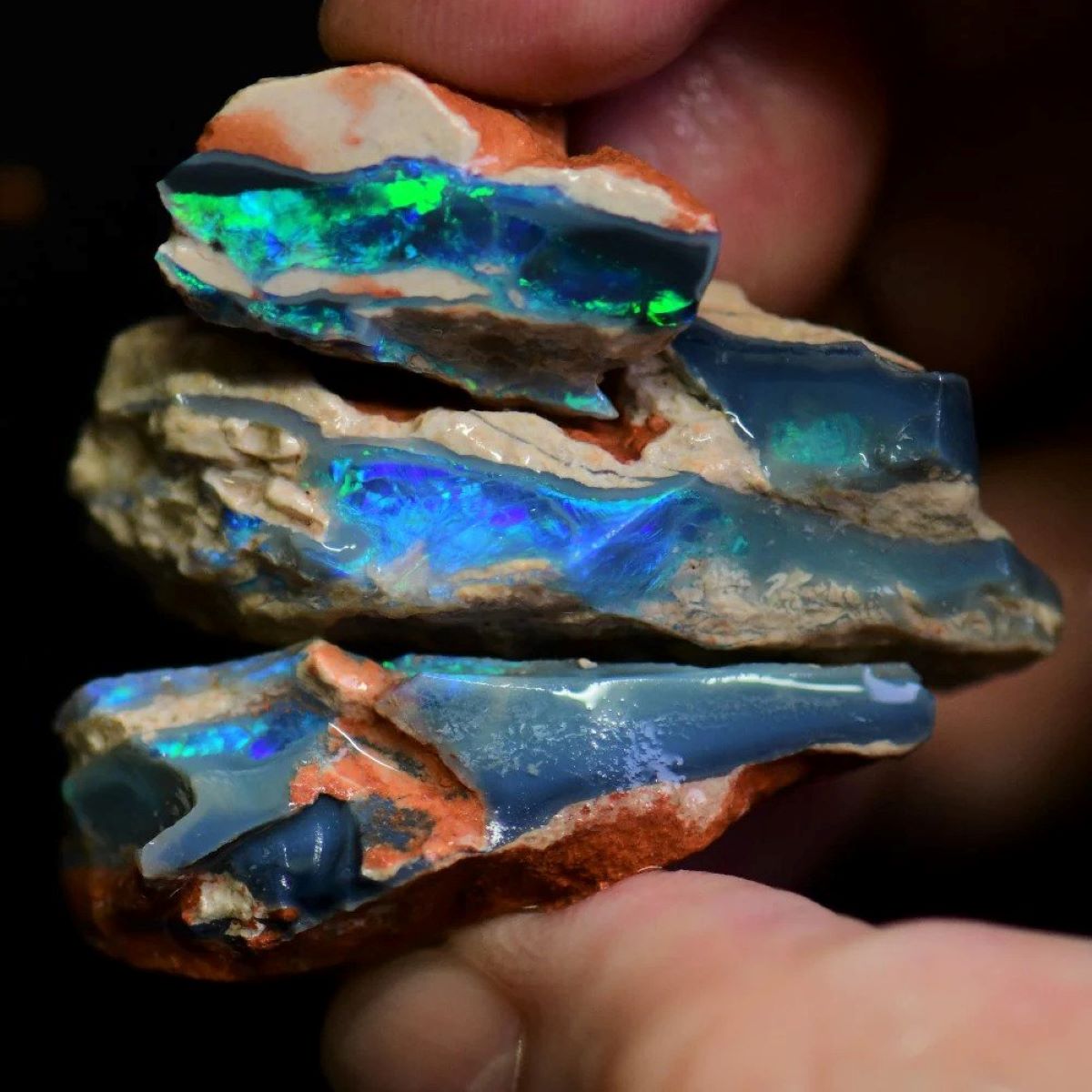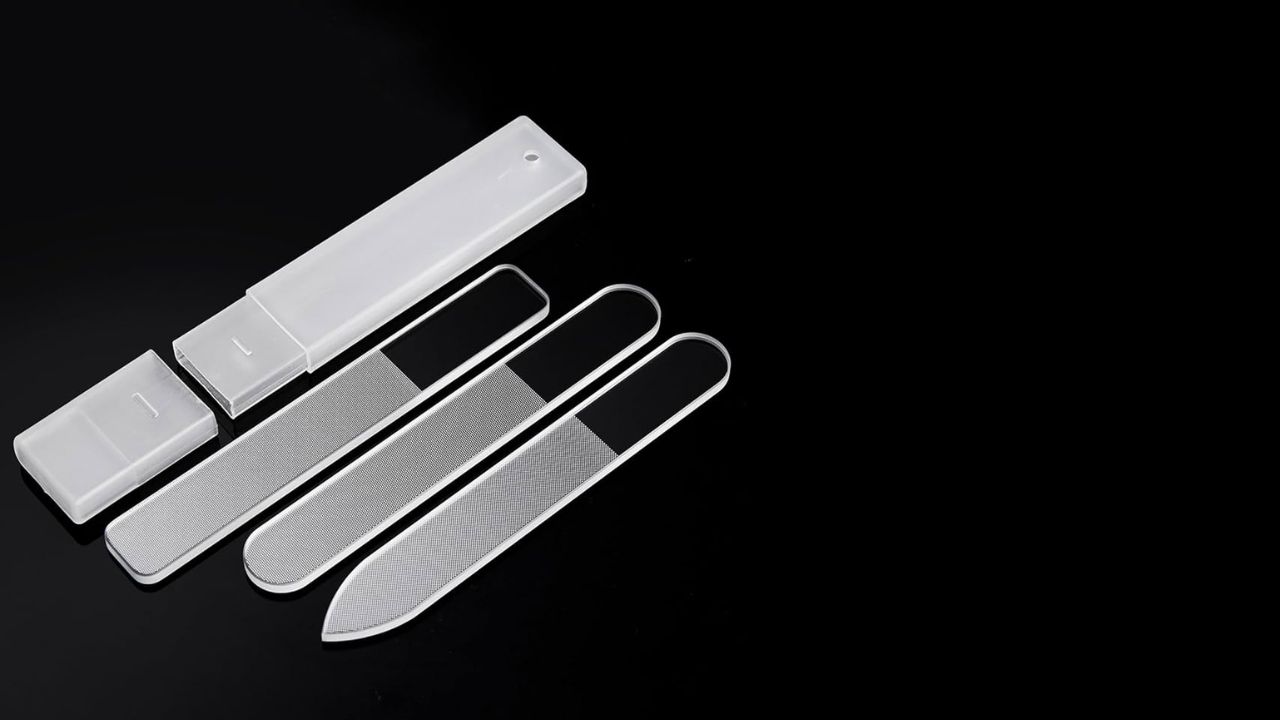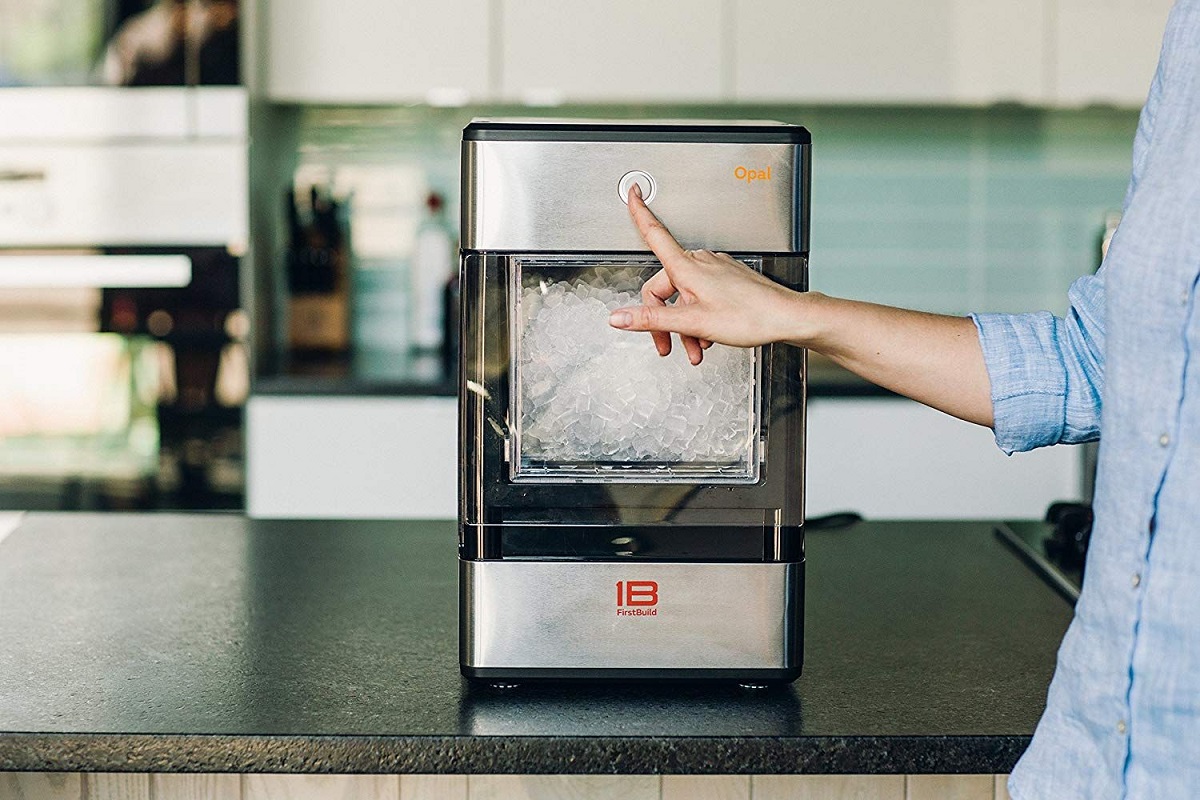

Articles
How To Store Rough Opal
Modified: December 7, 2023
Learn how to properly store rough opal with our informative articles. Discover the best practices and tips to preserve the quality of your opal specimens.
(Many of the links in this article redirect to a specific reviewed product. Your purchase of these products through affiliate links helps to generate commission for Storables.com, at no extra cost. Learn more)
Introduction
Welcome to the fascinating world of opals! Known for their mesmerizing play of colors and unique patterns, opals are a gemstone unlike any other. Whether you are a collector, jewelry enthusiast, or lapidary artist, properly storing rough opal is crucial to preserve its beauty and value.
Rough opal refers to uncut and unpolished pieces of opal straight from the mine. It comes in different shapes, sizes, and colors, making each piece truly one-of-a-kind. However, rough opal requires special care and attention to maintain its integrity and prevent damage.
In this article, we will guide you through the process of storing rough opal effectively. We will discuss the factors to consider, the necessary preparations, and the proper storage techniques to keep your opal collection safe and in pristine condition.
So, let’s dive into the world of rough opal storage and discover how to keep these precious gems shining bright for years to come.
Key Takeaways:
- Properly storing rough opal involves controlling environmental factors, gentle handling, and choosing suitable storage containers. By considering temperature, humidity, and light exposure, you can preserve the natural beauty of these unique gemstones.
- Regular maintenance and cleaning are essential for rough opal care. Dusting, using mild soap and water, and exercising caution with opal doublets and triplets will help maintain the opals’ vibrant colors and protect them from damage.
Read more: How To Store Opal
Understanding Rough Opal
Before we delve into the topic of storing rough opal, it’s important to have a basic understanding of what rough opal is and how it differs from cut and polished opals. Rough opal is essentially the raw form of opal, directly extracted from the ground. It is unshaped, uncut, and lacks the finished polish and shine of a cut opal.
Rough opal is valued for its natural beauty, as it offers a unique glimpse into the raw form of this captivating gemstone. It showcases the intricate patterns, colors, and textures that make opals so highly sought after. Each piece of rough opal is unique and has the potential to reveal stunning colors and patterns once it is cut and polished.
When dealing with rough opal, it’s important to note that it can vary in hardness, stability, and composition. Some rough opals may be more stable and suitable for cutting and polishing, while others may require extra care to prevent fractures, cracks, or color loss.
It’s also worth mentioning that rough opals can exhibit varying degrees of opalescence, which refers to the vivid play of colors commonly associated with opals. Some rough opals may have a strong and vibrant play of colors, while others may have a more subdued or uneven distribution of color. This uniqueness adds to the charm and appeal of rough opals.
Understanding the nature of rough opal is essential when it comes to storing it. By recognizing the characteristics and potential vulnerabilities of rough opals, you can take the necessary precautions to prevent damage and preserve their natural beauty.
Factors to Consider When Storing Rough Opal
When it comes to storing rough opal, several factors need to be taken into consideration to ensure its longevity and preservation. By addressing these key factors, you can protect your rough opal from physical damage, color fading, and other potential risks. Let’s explore the important factors to consider:
1. Temperature and Humidity:
Opals are sensitive to extreme temperature variations and high humidity. It’s crucial to store rough opal in an environment with controlled temperature and humidity levels. Ideal conditions include a temperature range of 65-75 degrees Fahrenheit (18-24 degrees Celsius) and a humidity level of around 50%. Avoid storing rough opal in areas prone to temperature fluctuations, such as attics or basements.
2. Light Exposure:
Opals, especially those with high opalescence, are vulnerable to prolonged exposure to direct sunlight and bright artificial light. UV rays can cause the colors to fade or diminish over time. To protect your rough opal, store it in a dark or dimly lit area, away from sources of direct light.
Read more: How To Rough In A Bathtub
3. Physical Protection:
Rough opals are susceptible to scratches, chips, and impacts. To prevent physical damage, store your rough opals in a secure and padded container. Individual pouches or small jewelry boxes lined with soft material, such as velvet or microfiber cloth, are excellent options for protecting each piece.
4. Avoid Chemical Exposure:
Opals can be sensitive to certain chemicals, solvents, and detergents. It’s recommended to keep your rough opals away from contact with cleaning agents, perfumes, hairsprays, and other chemicals that may cause discoloration or damage. Additionally, avoid exposing your opals to chlorine or abrasive substances, as they can harm the stone’s surface.
5. Air Circulation:
Proper air circulation is essential to prevent the buildup of moisture, which can lead to mold or mildew growth. Avoid storing rough opal in airtight containers or plastic bags that do not allow for airflow. Instead, opt for breathable storage options, such as fabric-lined boxes or display cases with vents.
By considering these factors and implementing the necessary precautions, you can ensure that your rough opal remains well protected and retains its natural beauty for years to come. Now that we’ve discussed the key factors to consider, let’s move on to the proper handling and preparation of rough opal before storage.
Proper Handling and Preparation
Handling rough opal with care is crucial to avoid accidental damage and preserve its integrity. Here are some important tips to follow when handling and preparing rough opal for storage:
Read more: What Is Opal Glass
1. Clean Hands:
Before handling rough opal, make sure your hands are clean and free from lotion, oils, or any substance that could transfer onto the stone’s surface. Use mild soap and water to thoroughly wash your hands and dry them with a clean towel before touching the opal.
2. Avoid Direct Contact:
When handling rough opal, avoid direct contact with bare hands as the natural oils and moisture from your skin can affect the stone’s appearance. Instead, use clean cotton gloves or handle the opal with tissue paper or a soft, lint-free cloth to minimize direct contact.
3. Gentle Touch:
Rough opal can be delicate and prone to fractures. Handle it with a gentle touch to avoid accidental breakage. Avoid applying excessive pressure or dropping the opal onto hard surfaces.
4. Allow Natural Drying:
If the rough opal is wet or damp, allow it to dry naturally before storing it. Rushing the drying process by using heat sources or direct sunlight can result in cracking or damage to the stone. Place the opal on a clean, absorbent surface and let it air dry at room temperature.
Read more: What Is Toilet Rough In
5. Assess and Inspect:
Before storing rough opal, it’s important to assess its condition. Examine each piece carefully for any visible cracks, fractures, or loose parts. If you notice any issues, consider seeking professional assistance to repair or stabilize the stone before storage.
By following these handling and preparation guidelines, you can minimize the risk of damage to your rough opal and ensure its preservation for the long term. Now that you’re familiar with the proper handling of rough opal, let’s move on to choosing the right storage container.
Choosing the Right Storage Container
When it comes to storing rough opal, selecting the right container is crucial to safeguard its beauty and protect it from potential damage. Here are some guidelines to help you choose the perfect storage container:
1. Size and Shape:
Consider the size and shape of your rough opals when selecting a storage container. Ensure that the container is spacious enough to accommodate the stones without overcrowding, which could lead to accidental collisions and damage. Opt for a container that allows each piece to be stored individually to prevent scratches and abrasions.
2. Material:
Choose a storage container made of material that is non-reactive and gentle on the opals. Avoid containers made of materials like metal or wood, as they may contain chemicals or coatings that could potentially harm the stones. Instead, opt for containers made of plastic, acrylic, or glass, as long as they are free from any abrasive surfaces that could scratch the opals.
Read more: What Is A Rough In Plumbing
3. Padding and Lining:
Look for a storage container with proper padding and lining to provide cushioning and protection. Soft materials such as cotton, velvet, or microfiber cloth are ideal for lining the interior of the container. This will help prevent scratches and absorb any minor impact that the opals may encounter.
4. Dividers or Compartments:
Consider a storage container that has dividers or compartments to keep each piece of rough opal separate. Dividers will help prevent stones from coming into contact with one another, reducing the risk of scratches and potential damage.
5. Transparent or Labeling Options:
Opt for a container that allows you to see inside easily. Transparent or clear containers make it convenient to assess your opal collection without having to open each compartment. Additionally, you can consider labeling the compartments or using a small piece of paper to write down the characteristics or details of each rough opal, facilitating easy identification.
By considering these factors, you can ensure that your rough opal collection is stored safely and securely. The right storage container will provide adequate protection and organization, allowing you to enjoy your opals with peace of mind. Next, let’s discuss how to control the environmental factors that can affect your rough opal.
Controlling Environmental Factors
Controlling the environmental factors surrounding your rough opal storage is essential to maintain its quality and prevent damage. Here are some important environmental factors to consider and how to control them:
1. Temperature and Humidity:
As mentioned earlier, opals are sensitive to temperature and humidity. To control these factors, store your rough opal in a room with stable temperature and humidity levels. Consider using a dehumidifier or humidifier to maintain the optimal humidity range of around 50%. Avoid storing your opals in areas prone to temperature fluctuations, such as near windows or vents.
2. Light Exposure:
Protect your rough opals from prolonged exposure to direct sunlight and intense artificial light. UV rays can cause fading and loss of color. Store your opals in a dark or dimly lit area, or use UV-blocking containers or display cases to prevent potential damage. If you need to view or showcase your opals, opt for LED lights with low UV emissions.
3. Air Quality:
Avoid storing your rough opals in areas with poor air quality, such as rooms prone to dust, pollutants, or airborne chemicals. Keep your opals away from areas where smoking or cooking takes place, as the pollutants and odors can permeate the stones. Regularly clean the storage area to minimize dust and contaminants.
4. Protection from Vibrations:
Excessive vibrations can lead to stress fractures and potential damage to your rough opals. Avoid storing them in areas with high vibration levels, such as near large machinery, speaker systems, or heavy traffic areas. Choose a stable location for your opals that is unlikely to experience frequent vibrations.
Read more: How To Connect Opal Ice Maker To Phone
5. Security:
Ensure the security of your rough opal collection by storing it in a safe and locked area. This protects your opals from theft or accidental damage. Consider installing a security system or using a safe specifically designed for jewelry and gemstone storage.
By controlling these environmental factors, you can create a safe and stable storage environment for your rough opals. This will help preserve their natural beauty and ensure their longevity. Next, let’s explore how you can secure and organize your rough opal collection for easy access and maintenance.
Securing and Organizing Your Rough Opal Collection
Securing and organizing your rough opal collection is essential for easy access, maintenance, and protection. Here are some tips to help you secure and organize your precious gemstones:
1. Storage System:
Consider implementing a systematic storage system for your rough opal collection. This can include using storage boxes, jewelry trays, or cabinets with various compartments or drawers to keep each piece separate and organized. Choose a system that allows for easy identification and retrieval.
2. Individual Packaging:
Package each rough opal individually in soft and non-abrasive pouches or jewelry boxes. This ensures that the opals do not come into contact with each other, reducing the risk of scratches and damage. Label or tag each package with any relevant information, such as the origin, size, and color of the opal.
3. Categorization:
Organize your rough opal collection based on categories that make sense to you. This can be based on the opal’s color, size, shape, or origin. Categorizing your opals makes it easier to locate specific pieces when needed and helps maintain an organized collection.
4. Display Options:
If you wish to showcase your rough opals, consider using display cases or shelves with secure enclosures. This allows you to enjoy the beauty of your collection while keeping it protected from dust, moisture, and potential accidents. Choose display options that offer proper support and protection for each opal.
5. Inventory Record:
Keep an inventory record of your rough opal collection. This can be in the form of a digital spreadsheet or a physical notebook. Include important details such as the opal’s size, weight, color, origin, and any other relevant information. This record helps you keep track of your collection and can be useful for insurance purposes.
By securing and organizing your rough opal collection in a systematic and thoughtful manner, you can ensure easy access, maintain its condition, and appreciate the beauty of your gems. Now let’s move on to discussing the importance of regular maintenance and cleaning for your rough opals.
Regular Maintenance and Cleaning
Regular maintenance and cleaning are essential to keep your rough opal collection in pristine condition. Proper care helps maintain the opal’s natural beauty and prevents any buildup of dirt, dust, or oils. Here are some guidelines for maintaining and cleaning your rough opals:
Read more: How To Clean An Opal Ice Maker
1. Gentle Handling:
Handle your rough opals with care during the cleaning process. Avoid applying excessive pressure or using abrasive materials that could scratch or damage the stone’s surface. Use a soft touch and moderate force when handling the opals.
2. Dusting:
Regularly dust off your rough opals to remove any surface particles or buildup. Use a clean, soft brush, such as a makeup brush or a dedicated jewelry brush, to gently sweep away dust and dirt. Alternatively, you can use a soft, lint-free cloth to wipe the stones clean.
3. Mild Soap and Water:
If your rough opals require deeper cleaning, prepare a mild solution of lukewarm water and gentle dish soap. Dip a soft-bristled toothbrush into the solution and gently scrub the opals. Avoid immersing the stones in water for extended periods as it can weaken the adhesives or stability of the opal.
4. Rinse and Dry:
After cleaning with soap and water, rinse the rough opals under lukewarm running water, ensuring all soap residue is removed. Use a soft cloth to gently pat dry each opal. Avoid rubbing the stones vigorously, as it may cause scratches or damage.
Read more: How To Smooth Out A Rough Concrete Patio
5. Caution with Opal Doublets and Triplets:
If you have rough opals that are in the form of doublets or triplets (opals with a backing or a cap), exercise caution while cleaning. These types of opals are more susceptible to damage from water and cleaning solutions. To clean them, lightly wipe the surface with a slightly damp cloth, taking care not to immerse them in water.
6. Professional Cleaning:
If your rough opals require extensive cleaning or maintenance, consult a professional lapidary or jeweler who specializes in opals. They have the expertise and tools to safely clean and restore your opals, ensuring their longevity and beauty.
Regular maintenance and cleaning will keep your rough opals looking their best and protect them from any potential damage. By following these guidelines, you can enjoy the vibrant colors and natural beauty of your rough opal collection for years to come. Now, let’s wrap up our discussion.
Conclusion
Congratulations! You now have a solid understanding of how to store rough opal effectively. By considering the factors such as temperature, humidity, light exposure, physical protection, and environmental control, you can ensure the longevity and preservation of your precious gemstones.
Remember to handle rough opal with care, using clean hands and gentle touch to prevent damage. Properly prepare the opals for storage by allowing them to dry naturally and assessing their condition. Choose suitable storage containers that offer the right size, material, padding, and organization to protect the opals from scratches and other potential hazards.
Controlling environmental factors such as temperature, humidity, light exposure, air quality, and vibrations is crucial for maintaining the quality of your rough opal collection. Keep the opals in a secure location and maintain a clean and dust-free environment to prevent any potential damage.
Additionally, regular maintenance and cleaning are essential to ensure the opals retain their natural beauty. Follow gentle handling practices, dust the opals regularly, and use mild soap and water for deeper cleaning when necessary. Remember to dry the opals thoroughly and exercise caution with opal doublets and triplets.
If needed, consult professionals for extensive cleaning or restoration to ensure the opals remain in optimal condition. Maintain an inventory record of your rough opal collection to keep track of their characteristics and value.
With your newfound knowledge, you can confidently store and care for your rough opals, preserving their exquisite colors and patterns for generations to come. So go ahead, gather your opals, and create a safe and organized storage space that showcases the natural beauty of these captivating gemstones.
Enjoy the journey of being a caretaker of these precious and unique creations of nature, and may your rough opal collection continue to inspire awe and wonder.
Frequently Asked Questions about How To Store Rough Opal
Was this page helpful?
At Storables.com, we guarantee accurate and reliable information. Our content, validated by Expert Board Contributors, is crafted following stringent Editorial Policies. We're committed to providing you with well-researched, expert-backed insights for all your informational needs.







0 thoughts on “How To Store Rough Opal”